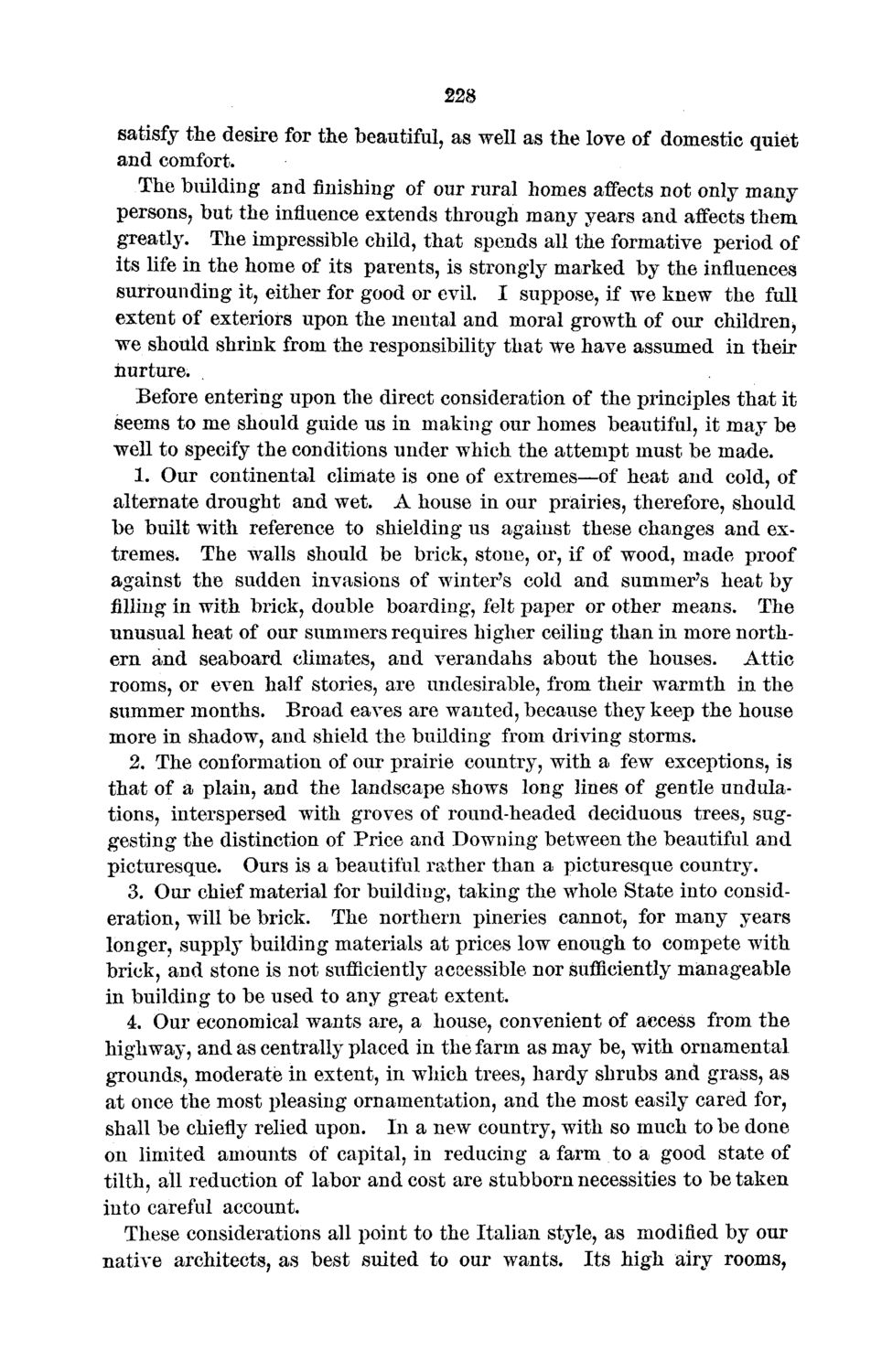| |
| |
Caption: Board of Trustees Minutes - 1872
This is a reduced-resolution page image for fast online browsing.

EXTRACTED TEXT FROM PAGE:
228 satisfy the desire for the beautiful, as well as the loye of domestic quiet and comfort. The building and finishing of our rural homes affects not only many persons, but the influence extends through many years and affects them greatly. The impressible child, that spends all the formative period of its life in the home of its parents, is strongly marked by the influences surrounding it, either for good or evil. I suppose, if we knew the full extent of exteriors upon the mental and moral growth of our children, we should shrink from the responsibility that we have assumed in their nurture. Before entering upon the direct consideration of the principles that it seems to me should guide us in making our homes beautiful, it may be well to specify the conditions under which the attempt must be made. 1. Our continental climate is one of extremes—of heat and cold, of alternate drought and wet. A house in our prairies, therefore, should be built with reference to shielding us against these changes and extremes. The walls should be brick, stone, or, if of wood, made proof against the sudden invasions of winter's cold and summer's heat by filling in with brick, double boarding, felt paper or other means. The unusual heat of our summers requires higher ceiling than in more northern and seaboard climates, and verandahs about the houses. Attic rooms, or even half stories, are undesirable, from their warmth in the summer months. Broad eaves are wanted, because they keep the house more in shadow, and shield the building from driving storms. 2. The conformation of our prairie country, with a few exceptions, is that of a plain, and the landscape shows long lines of gentle undulations, interspersed with groves of round-headed deciduous trees, suggesting the distinction of Price and Downing between the beautiful and picturesque. Ours is a beautiful rather than a picturesque country. 3. Our chief material for building, taking the whole State into consideration, will be brick. The northern pineries cannot, for many years longer, supply building materials at prices low enough to compete with brick, and stone is not sufficiently accessible nor sufficiently manageable in building to be used to any great extent. 4. Our economical wants are, a house, convenient of access from the highway, and as centrally placed in the farm as may be, with ornamental grounds, moderate in extent, in which trees, hardy shrubs and grass, as at once the most pleasing ornamentation, and the most easily cared for, shall be chiefly relied upon. In a new country, with so much to be done on limited amounts of capital, in reducing a farm to a good state of tilth, all reduction of labor and cost are stubborn necessities to betaken into careful account. These considerations all point to the Italian style, as modified by our native architects, as best suited to our wants. Its high airy rooms,
| |